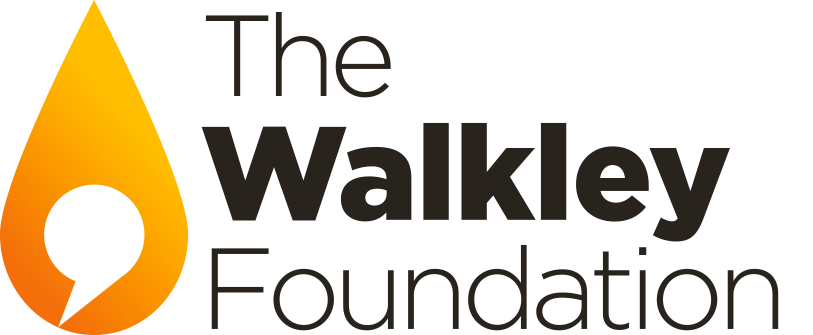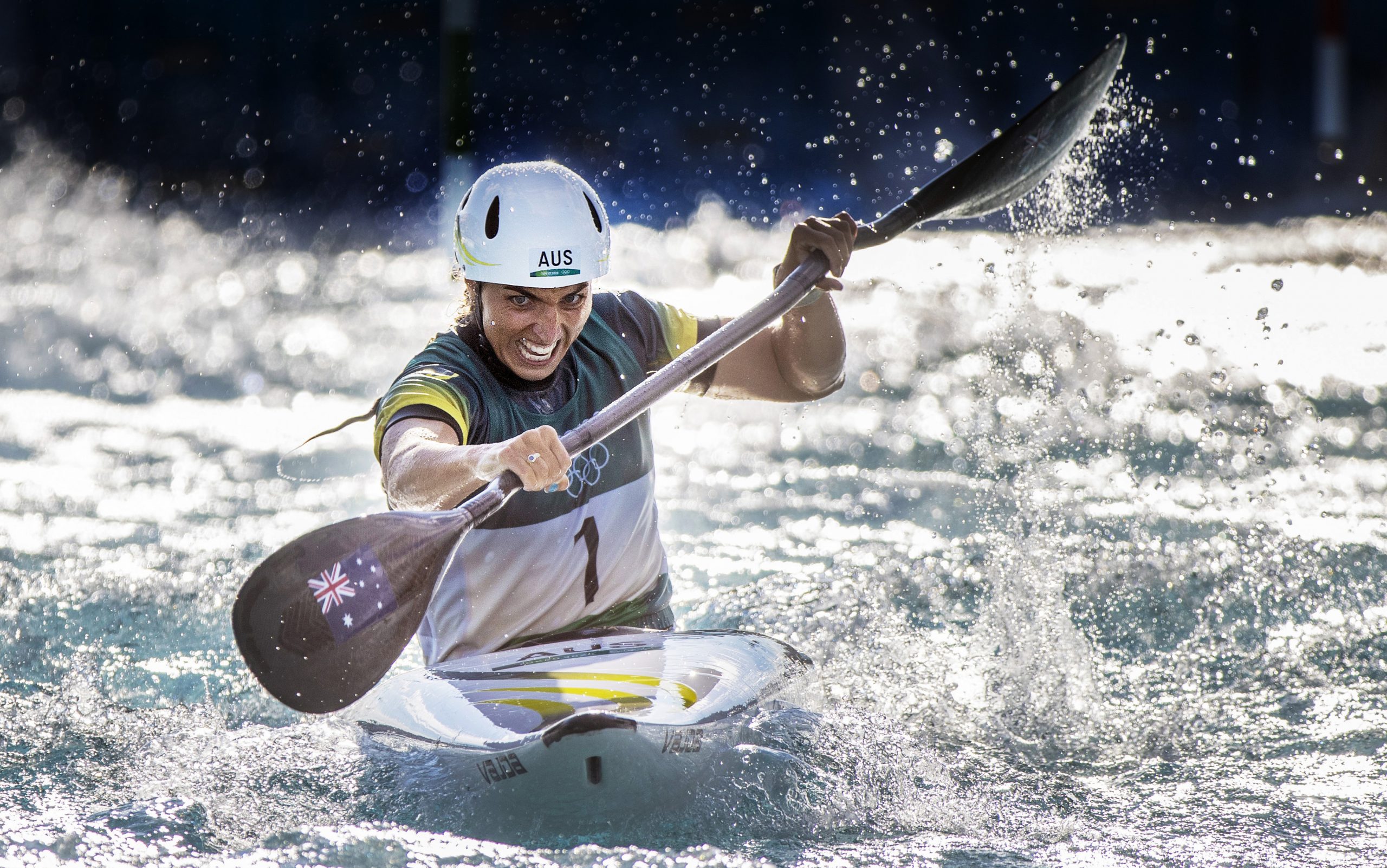Photojournalist Alex Coppel discusses the perilous and rewarding process of capturing the biggest events of 2021
Whether it’s an Olympic swimmer winning Gold or a baby taking its first dip, Alex Coppel’s photography offers a striking insight into a world living in the shadow of the pandemic.
Coppel braved violent crowds of anti-lockdown protesters and captured exclusive images of the 2020 Tokyo Olympics as COVID-19 case numbers soared.
As a staff photographer for several News Corp publications including the Herald Sun, The Daily Telegraph and The Courier-Mail, Coppel has built a portfolio of news, sport and feature photography that is as varied as it is remarkable.
In 2021, his efforts paid off. He earned the coveted Nikon-Walkley Press Photographer of the Year title for the second time, and also claimed the Walkley Award for Sport Photography.
Coppel discusses his win with 2021 Jacoby-Walkley Scholarship winner, Ella McCrindle, following the Walkley Awards in Sydney in February 2022.
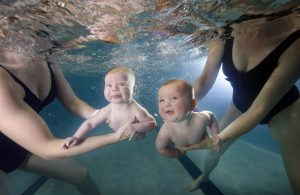
Coppel’s portfolio features an image of babies ‘drown-proofed’ at a Melbourne swim school. Covid-19
prompted a decrease in young Australians taking swimming lessons, leading to increased fears of summer drownings
How did it feel when you found out you’d won the title of Nikon-Walkley Press Photographer of the Year?
Before that evening I hadn’t known what the other two photographers [Jason Edwards and Christopher Hopkins] had entered. When we walked in and saw the exhibition I thought, ‘I reckon they’ve got a better chance than me.’
I didn’t expect to win. I was pretty convinced that one of the other guys was going to get it before me, and it was a real surprise to hear my name, it really was. I didn’t think that it would be me called up to the stage, which is probably why I looked like a stunned mullet.
I was in awe of what my colleagues produced, and that’s everybody in the room. I’m completely honoured and blown away that I received the award and it’s just pushed me to want to go ahead even more.
“I didn’t expect to win…I was in awe of what my colleagues produced.”
This is the second time you’ve received this Award. How did you select which images to include in your body of work?
Without sounding like I’m talking myself up, I think I’m quite good at self-editing. I can get rid of what I know is not good.
It can be a good photo that I’ve spent a long time trying to achieve, but I can look at it sort of like a judge would. If I’m too connected to it, it doesn’t make it a good photo. I have to look at it from the outside. And in the press photographer category, you’ve got to show yourself as being a fairly good all-rounder.
At the Olympics, I was trying to pick things that had some interest to them rather than just someone crossing a finish line.
Every time Tara Davis from America jumped [in the long jump], her hair went everywhere and I just thought, ‘well, that’s interesting, that’s different.’

Tara Davis from the USA lets her hair fly during landing, in the final of the Women’s Long Jump at the Tokyo Olympic Games.
I also like the photo of Cal Dressel flying through the water. All this water’s running in ridges down his back and you can see his tattoo and he is just pressing through.
Shooting ‘The Games That Had to Happen’
Your work features some incredible shots from the 2020 Tokyo Olympics. What were some of the challenges involved in that trip?
It was a bit surreal being able to jump on a plane. The process, everything, all the documentation that we needed to actually even get on the plane was just phenomenal.
There was only 50 per cent of the seating that there would normally be, which meant you had to get there earlier than you normally would to reserve a spot. You basically get in there two or three hours before an event, sitting there, waiting for it to start.
The swimming has unpredictable results and you really have to watch all the time for a reaction or a moment. Leading up to that, you’re anticipating where to position yourself. It’s limited where you can position yourself, but you’ve still got to try.
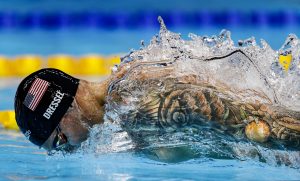
USA’s Caeleb Dressel powers through the water on his way to winning Gold, in the final of the Men’s 100m Butterfly at the Tokyo Olympic Games.
We didn’t have the best access. I know Getty Images have the pool access front and centre. But we, the general photographers, have to fight to get a position beyond them. It’s almost like taking a backseat and you’re trying to shoot through everybody else.
If you’re too high, you end up with more of the pool in the background, whereas if you’re too low you can shoot straight across and get it looking like you’re at the same level as the water.
If you go to something like BMX, you could either be down the bottom with an ultra-wide angle or right up the back with a longer lens. So essentially, you have to take a long lens with you in the event that you need it. All the images that I put up [in the portfolio] were taken with a very long lens.
I think if you can get great pictures out of the games with general access, then it shows that you’re fighting hard to get those images.
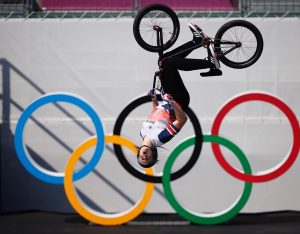
Charlotte Worthington from Britain executes a flip on her way to claiming Gold in the Olympics debut event of BMX Freestyle.
How do you imbue such a powerful sense of atmosphere and emotion into these shots?
I think my selection of pictures has a full emotive range of facial expressions and things going on. The Olympics was one example of that. The swimmer is probably the only photo whose face you can’t see in my folio.
For a lot of them, it’s about the elation. And I feel the Olympians celebrated a lot harder because of COVID-19.
There were no crowds at the Olympics, which means you could hear all of the emotion of the athletes. You could hear them screaming in happiness as they crossed the line, which made it even more special.
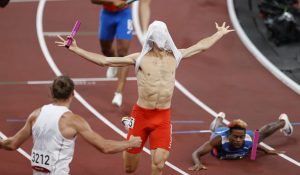
Poland’s Kajetan Duszynski crosses the line to win Gold in the Mixed 4 x 400m Relay, and throws his shirt over his head in the excitement. The victor’s elated cries could be heard from the stands.
Risking it all at Melbourne’s anti-lockdown protests
Some of your best work captures violent anti-lockdown protests in Melbourne. Were you scared of catching COVID or getting caught in the brawl?
It’s a tricky one because we’ve got protesters to the left and police to the right and we’ve got to be slap bang in the middle of it. There’s nowhere else to be to get the photos and it does get really hairy at times.
There were some protests where we had things thrown at us. I had a brass statue hit me right in the hip one day and I had a full water bottle hit me in the chest another day.
I actually had a helmet that I put on and started wearing because it started getting a bit ugly.
We also have to wear goggles and masks. They’re essential because if you get pepper spray in your eyes, you’re out of action for a good 20 minutes. And it has happened to me where I’ve been sprayed.
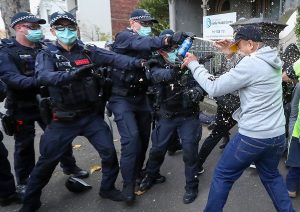
Police clash with protesters and pepper-spray a man during a north Melbourne anti-lockdown protest in August 2021.
We were in a Melbourne protest where two groups came together and clashed and the police were trying to separate them. We were caught in the middle and I got pepper sprayed on the floor.
It’s part of the package. You’re on the front line and you could potentially cop it.
How do you find dealing with the police at these events — can they distinguish you from the protesters? Are you concerned for your safety?
They didn’t differentiate between us [the media] and them [the protestors]. And I think it’s because we’re traveling a little bit lighter now than we used to. TV cameramen have these giant cameras on their shoulders, whereas [print photojournalists] have two cameras over ours.
A lot of the protesters are also carrying camera gear. We’re starting to blend a little bit more, so the police have targeted us a little bit, not knowing we were actually media.
There was a time where I got arrested as well. I had to call out for the police media spokesperson and they came over and said, ‘what are you doing? He’s media. Stop.’
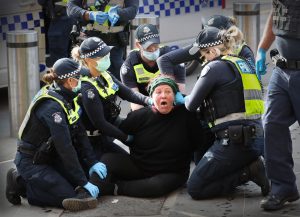
A woman is arrested after allegedly biting a police officer during an anti-lockdown protest at Melbourne’s Flinders Street Station.
What technical challenges do you face when reporting on protests?
Well, the biggest challenge with the protest would be to get yourself in the right position. You could hear screams 30 metres away, but by the time you run over, you may have missed the whole thing.
You try not to be in a situation where you’re changing lenses in protests or anything, or putting on a flash. You’ve just got to cover whatever’s happening quickly.
And that’s why you travel fairly light when you cover those things. I only carry two Canon DSLRs. They’re durable, they’re robust and they’re bigger than the standard, but still, you might only have one camera over one shoulder and one over the other and nothing else with you.
A future in photojournalism?
As the traditional media faces budget cuts, more and more journalists are being sent out with their iPhones to take pictures or videos on the side. Why do you think photojournalism is still important?
I think the power of imagery is just ever present. It’s just never been stronger. A lot of people are switching to video and the media of video is everywhere. But I just think the power of a single picture is just as strong now as it ever has been.
I think you’re documenting what’s happening in front of you. With the medium, you’re creating history, moments in time. Whereas with a video it’s not so historic, it’s not so lasting.
We previously had more staff and more resources, but it’s just changed and things are a bit harder.
I mean, we don’t cover things Australia wide so extensively, so freely, anymore because we’re so short staffed.
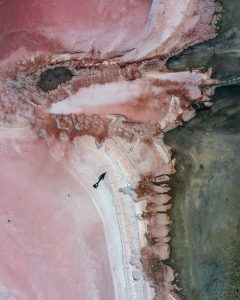
A man’s shadow is thrown across the ground on the banks of Pink Lake in western Victoria, shown from the height of a drone. Coppel laments funding cuts to photojournalism, which have made travel to such remote regions more difficult.
At News Corp where I work, we can’t just disappear for five days and come back with a beautiful photo essay. It’s got to be something that is relevant to the current news that we are doing. It’s got to be fairly close.
It’s just really important to go out and document. I mean, look at the stuff that’s coming out of Ukraine right now. We’re seeing the strongest imagery coming out of there and you just have a sense of longing and wanting to go and cover it and document history.
“I think you’re documenting what’s happening in front of you. With the medium, you’re creating history, moments in time.”
What’s next for you career-wise?
Obviously I’ll keep doing what I’m doing, but it’s pushed me a little harder I think. It always does when you see a great body of work in front of you, other people’s work, your colleagues’, the best of the best. You just want to get out there and keep producing and be a part of it.
I’m currently doing the Good Friday Appeal, where the Herald, Weekly Times, and the Children’s Hospital have a partnership where we raise money for five weeks leading up to Easter. We concentrate on all the great stories that are coming out of the Children’s Hospital involving mums and dads and sick kids.
I’m pretty inspired after winning the Walkley. Seeing the amazing work printed on the exhibition wall has made me want to go and shoot some little photo essays and come up with my own ideas and expand a little bit.
There is the Commonwealth Games coming up in August, but they haven’t selected a team yet. I’m not sure who they’ll select. The Paris Olympics would be another good one in two years’ time. I’ll be putting my hand up for that one.
